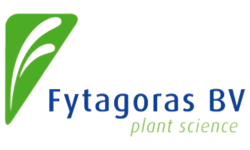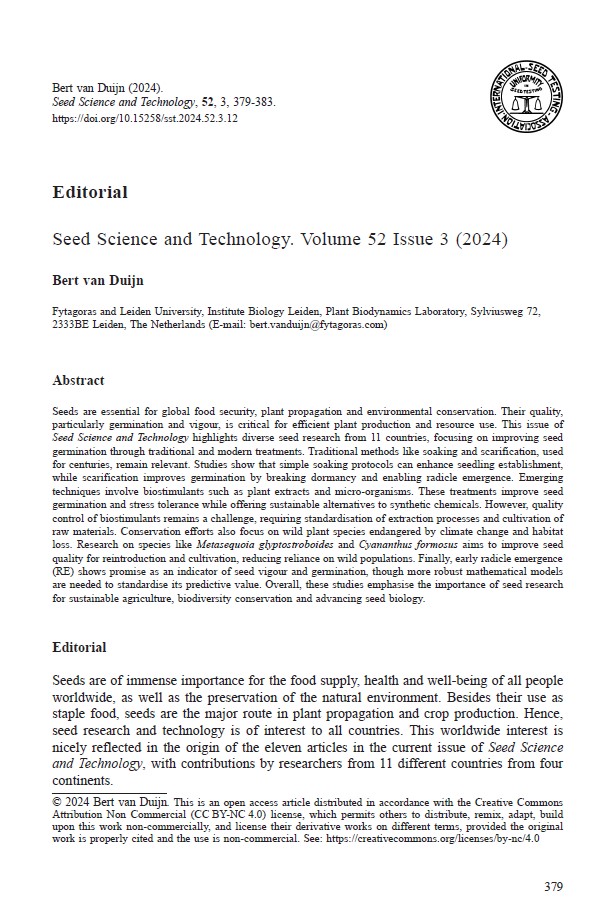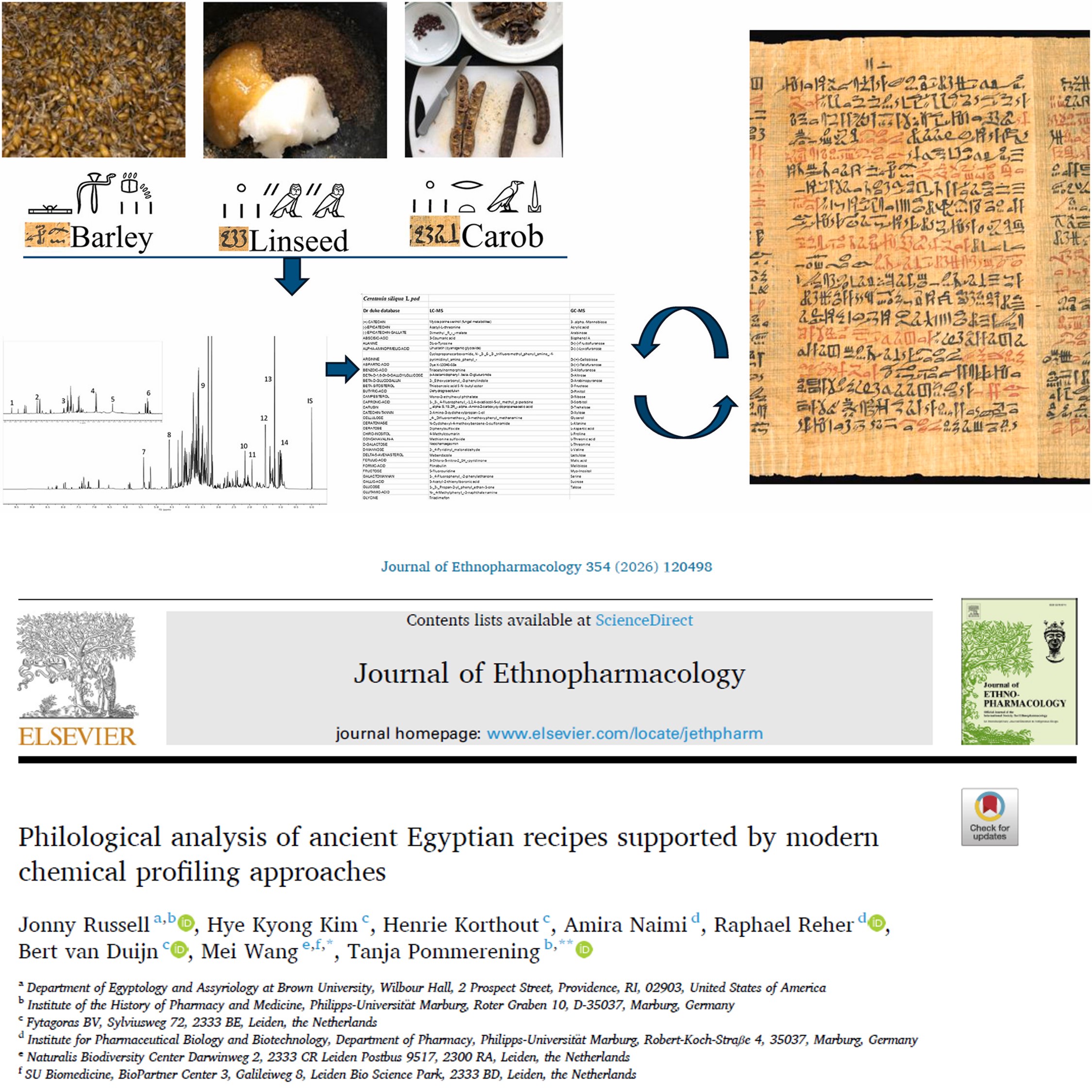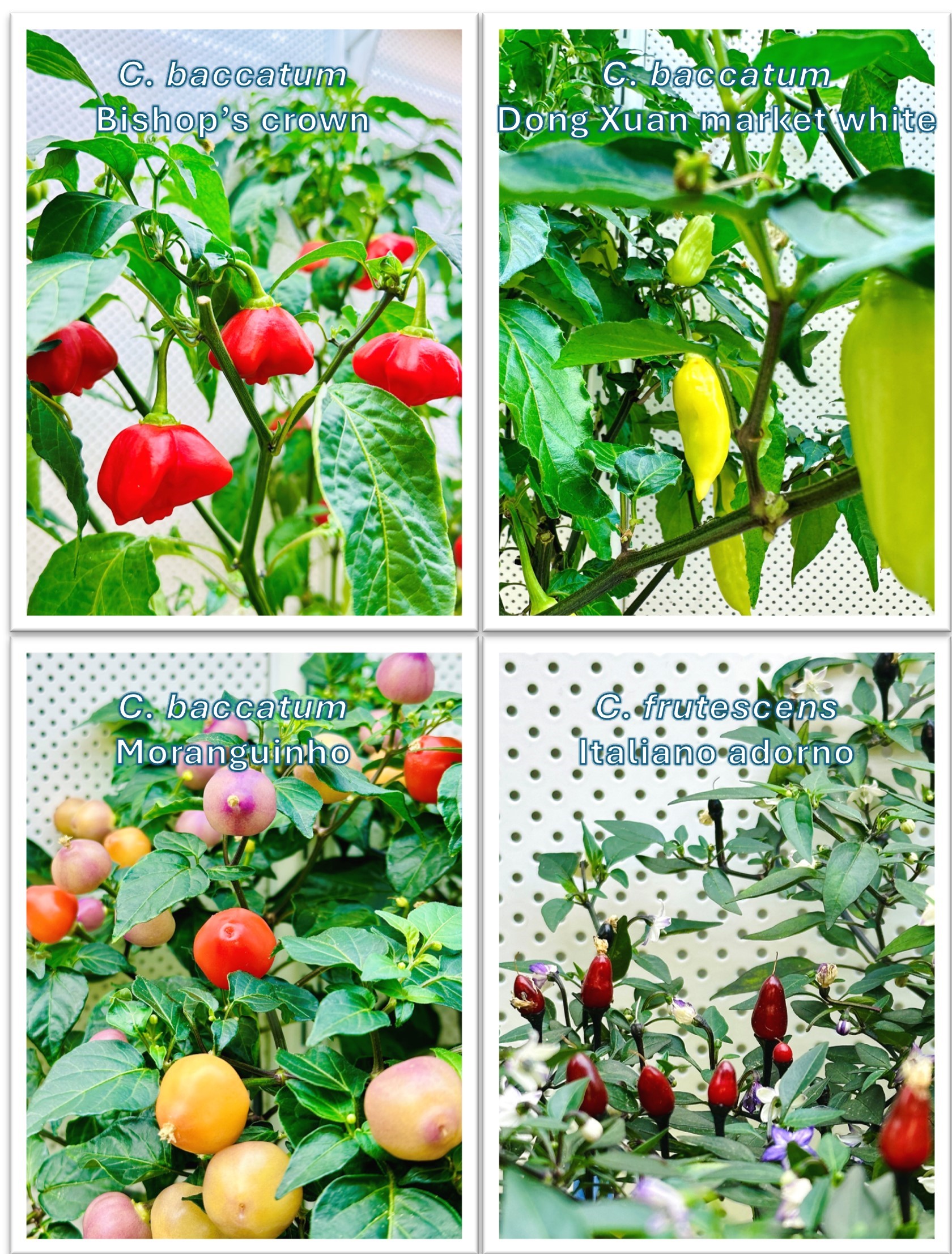In de meest recente uitgave van het wetenschappelijke tijdschrift Seed Science and Technology (https://www.ingentaconnect.com/content/ista/sst) is het redactioneel commentaar geschreven door Bert van Duijn. Samenvattend behandelt en becommentarieert het stuk de 11 artikelen in de nieuwste uitgave van het tijdschrift.
Seeds are essential for global food security, plant propagation and environmental conservation. Their quality, particularly germination and vigour, is critical for efficient plant production and resource use. The latest issue of Seed Science and Technology highlights diverse seed research from 11 countries, focusing on improving seed germination through traditional and modern treatments. Traditional methods like soaking and scarification, used for centuries, remain relevant. Studies show that simple soaking protocols can enhance seedling establishment, while scarification improves germination by breaking dormancy and enabling radicle emergence. Emerging techniques involve biostimulants such as plant extracts and micro-organisms. These treatments improve seed germination and stress tolerance while offering sustainable alternatives to synthetic chemicals. However, quality control of biostimulants remains a challenge, requiring standardisation of extraction processes and cultivation of raw materials. Conservation efforts also focus on wild plant species endangered by climate change and habitat loss. Research on species like Metasequoia glyptostroboides and Cyananthus formosus aims to improve seed quality for reintroduction and cultivation, reducing reliance on wild populations. Finally, early radicle emergence (RE) shows promise as an indicator of seed vigour and germination, though more robust mathematical models are needed to standardise its predictive value. Overall, these studies emphasise the importance of seed research for sustainable agriculture, biodiversity conservation and advancing seed biology.



